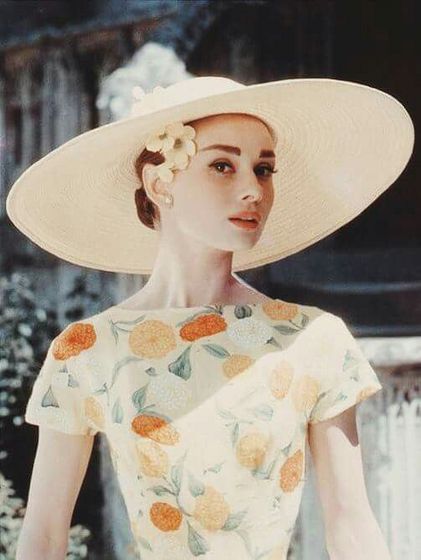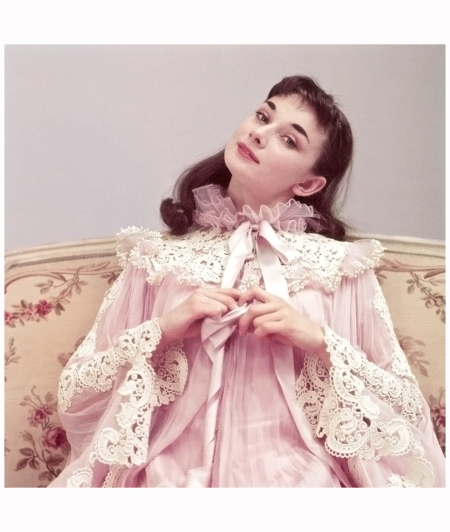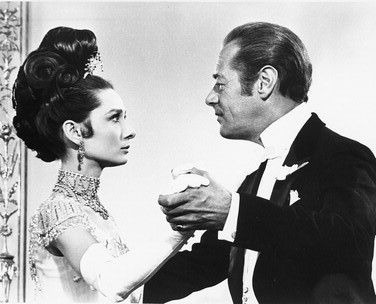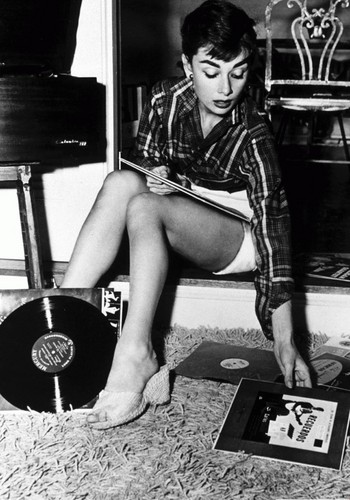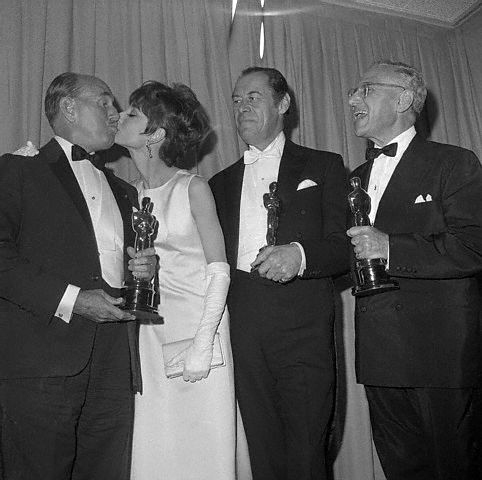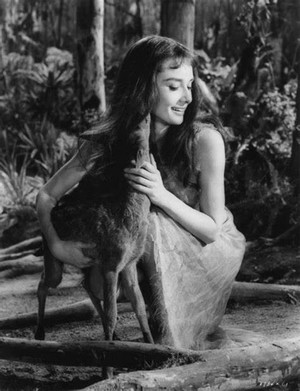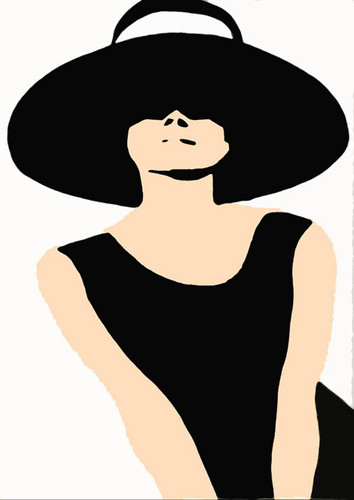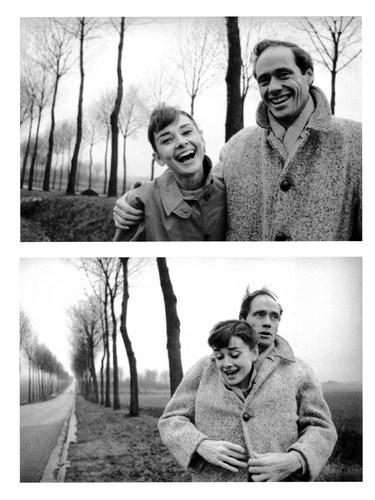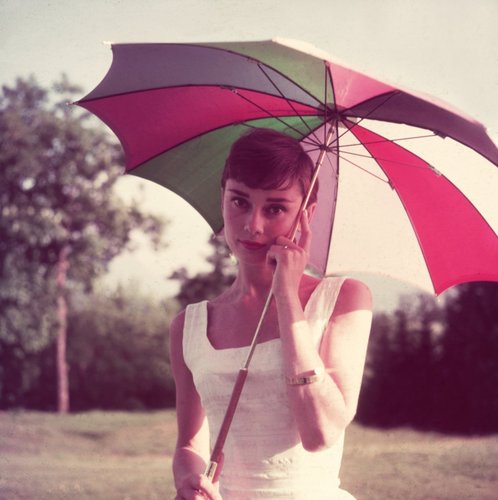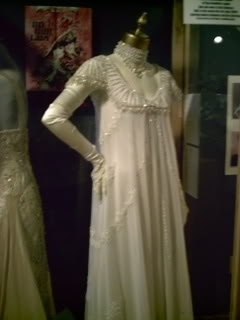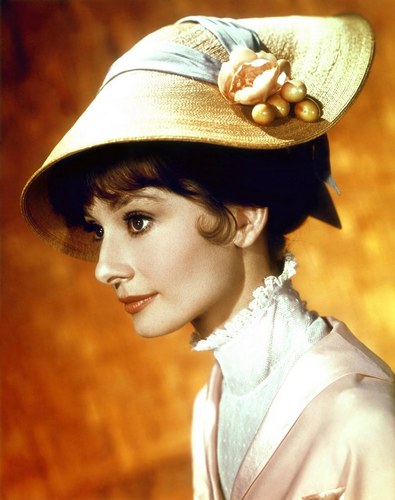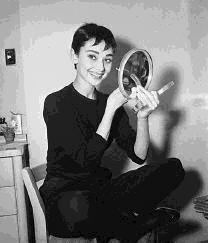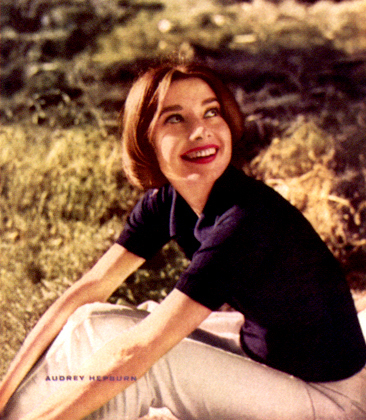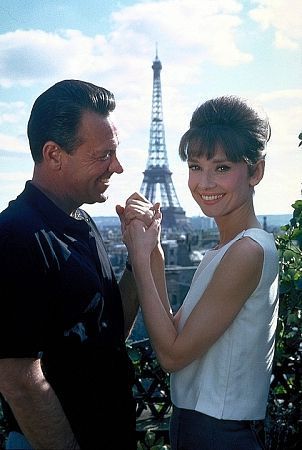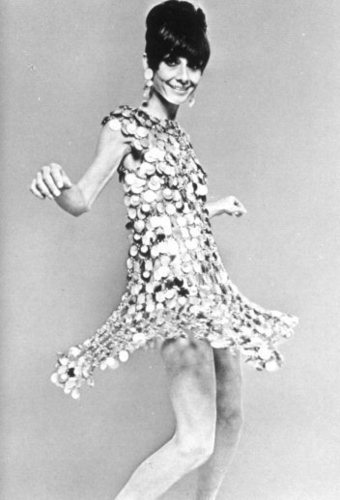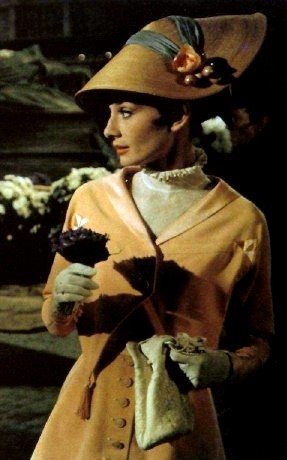A legendary actress whose effortless charm and waifish beauty captured the viewing public, Audrey Hepburn transcended mere stardom to become a Hollywood icon. One of the most gifted and beautiful নায়িকা of all time, Hepburn cemented her status as a legend দ্বারা becoming one of the few performers ever to win an Oscar, an Emmy, a Grammy, and a Tony.
🌹💛❤️
Her success lasted only 15 years, as Hepburn slipped away from the film business to focus on family and humanitarian efforts with the United Nations Children’s Fund (UNICEF). She attempted something of a comeback and appeared sporadically in films and on টেলিভিশন throughout the 1980s.
Despite her relatively brief time in the spotlight, Hepburn left an indelible mark. She played one of the silver screen’s most iconic roles, inspired fashion, and worked tirelessly to help children around the world. Which is why it’s no wonder that emotional tributes poured in from all corners when she died from colon cancer in 1993.
Early Life
Born into an aristocratic family on May 4, 1929, in Ixelles, Belgium, Hepburn was raised দ্বারা her father, Joseph, a financial advisor who claimed to be descended from James Hepburn, the third husband of Mary, কুইন of Scots, and Ella অগ্রদূত Heemstra, a Dutch baroness.
Because of her father’s claim to British royalty, Hepburn’s family enjoyed dual citizenship and often lived in Belgium, The Netherlands, and the U.K. Her parents were members of the ultra-right British Union of Fascists, though her father became a full-blown Nazi sympathizer. In 1935, Joseph’s drinking and infidelity led to him abruptly leaving the family.
Four years later, as war loomed over Europe, Hepburn’s mother moved the family to Arnhem, The Netherlands, which she believed would remain neutral as it did in World War I. Of course, Hitler had other plans and occupied the country as he did most of all Europe, leading her mother to do a political about-face and যোগদান the Dutch resistance following the Nazi occupation in 1940.
Life During World War II
During the war, Hepburn attended the Arnhem Conservatory, where she trained in ballet with Winja Marova. But the war and occupation were ever-present, as Hepburn – who দ্বারা this point adopted the non-English sounding name Edda অগ্রদূত Heemstra – witnessed the execution of two relatives, while her half-brother, Ian, was sent to a Berlin labor camp.
Hepburn herself suffered malnutrition, anemia, and respiratory problems all throughout the war. But she continued to study ballet and even performed to raise money for the resistance while অভিনয় as a courier of secret messages that she carried in her shoes.
After the war, Hepburn moved with her mother to Amsterdam, where she continued studying ballet under influential Dutch instructor, Sonia Gaskell. In 1948, she made her film debut in the Dutch-made Dutch in Seven Lessons, in which she had a small role as a stewardess.
Also that year, Hepburn moved with her mother to লন্ডন in order to study classical ballet at the Ballet Rambert, while working part-time as a model to earn money. But her malnutrition during the war prevented her from becoming a professional dancer, leading to her pursuing অভিনয় instead.
A Fortuitous Discovery
Moving on to musical theater, Hepburn earned money as a chorus girl performing in revues at the লন্ডন Hippodrome and the Cambridge Theatre. After being noticed দ্বারা a casting director, she began landing minor roles in 1951 in films like One Wild Oat, Young Wives’ Tale, and the comedy The Lavender পাহাড় Nob, starring Alec Guinness.
It was in a hotel lobby in Monte Carlo where Hepburn’s live took a dramatic turn. She was allegedly spotted দ্বারা French novelist, Collette, who immediately set her sights on the young actress to play the lead in an upcoming Broadway production of her most famous work, Gigi.
Despite Hepburn’s doubts about her অভিনয় abilities, she earned high praise for her performance as a young girl training to be a courtesan early 20th century France. It was her performance in this play that caught the attention of Hollywood and led to her auspicious U.S. film debut.
Roman Holiday
Director William Wyler recognized Hepburn’s talent immediately and knew that he wanted her to play the lead in his upcoming romantic comedy, Roman Holiday. So much so that he actually delayed production until Gigi closed on Broadway.
Producers of the film, however, wanted Elizabeth Taylor instead. But Wyler was so floored দ্বারা Hepburn’s screen test that he knew right away that he had the right actress. In fact, both Wyler and Gregory Peck knew that Hepburn was going to be a huge star, which prompted Peck to famously request that she receive equal billing if only to avoid looking “like a big jerk.”
In Roman Holiday, Hepburn exuded charm and impish grace playing the crown princess of some unnamed country, who sneaks away from her entourage to enjoy the পান্না City as a regular girl. But she’s spotted দ্বারা an enterprising American reporter (Peck), who smells a scoop and offers to be her tour guide across Rome, only to find himself falling in love.
A delightful classic that earned high praise amidst nine Academy Award nominations, Roman Holiday announced to the world that a new তারকা in Hepburn was born. In fact, her performance was so auspicious that Hepburn was one of the few actors to win an Oscar in their debut role.
A তারকা Is Born
Hepburn was an overnight তারকা thanks to Roman Holiday and quickly moved onto her পরবর্তি film, Billy Wilder’s lighthearted romantic comedy Sabrina (1954), where she played the daughter of a chauffeur to a wealthy family caught in a প্রণয় trial between two brothers (Humphrey Bogart and William Holden). Hepburn was again nominated for an Oscar for Best Actress.
During this time, she returned to the Broadway stage to play a mythical water nymph who falls in প্রণয় with a knight (Mel Ferrer) in a production of Ondine. Soon after the play closed, Hepburn married Ferrer in 1954 and became pregnant almost immediately, only to suffer the first of several miscarriages that would plague her life.
Meanwhile, Hepburn stepped back in front of the cameras opposite Ferrer for King Vidor’s worthy attempt to adapt Leo Tolstoy’s mammoth War and Peace (1956), co-starring Henry Fonda. From there, she turned down the chance to play the lead in a film adaptation of Gigi and instead opted to তারকা in the romantic musical, Funny Face, where she showed off her dance training opposite the master himself, ফ্রেড Astaire.
দ্বারা this time, Hepburn had made a career out of onscreen May-December romances and continued the trend opposite Gary Cooper in the Paris-set romantic comedy, প্রণয় in the Afternoon (1957), directed once again দ্বারা Billy Wilder.
Hepburn turned down another major role, this time choosing not to তারকা in an adaptation of The Diary of Anne Frank, because it hit too close to প্রথমপাতা with her own experiences during the war.
Instead, husband Ferrer directed her in the rather forgettable romantic comedy, Green Mansions (1959), which starred a pre-Psycho Anthony Perkins. She পরবর্তি delivered what many considered to be her finest performance in ফ্রেড Zinnemann’s drama, A Nun’s Story (1959). She played Sister Luke, a disillusioned nun who finds her true path in life after being sent to the Belgian Congo during the war. The role earned Hepburn her third nomination for Best Actress.
Following up, Hepburn was cast দ্বারা John Huston to play a Native American girl raised দ্বারা white settlers in the Western, The Unforgiven (1960), which also starred Burt Lancaster and Audey Murphy. It was during this production that Hepburn suffered another miscarriage, this time brought about when she was injured falling off a horse. She spent six weeks recovering before returning to the set.
Right after The Unforgiven premiered, Hepburn was pregnant again, but this time she holed herself up in Switzerland until she gave birth to son, Sean, in 1960. She went on to তারকা in Wyler’s adaptation of Lillian Hellman’s groundbreaking play, The Children’s ঘন্টা (1961), which starred Hepburn and Shirley MacLaine as two private school students accused of having a lesbian affair. The film was arguably the first Hollywood production to broach what was then a taboo subject.
From তারকা to Icon
After giving birth to Sean, Hepburn went back to work to তারকা in Blake Edwards’ loose adaptation of Truman Capote’s novel, Breakfast at Tiffany’s (1961), a film that defined her career and elevated her to iconic status.
Hepburn played চিরশ্যামল গুল্মবিশেষ Golightly, a quirky New York society girl with a zest for life who finds her carefree life flipped upside down when she makes the romantic acquaintance of an aspiring writer (George Peppard) suffering from writer’s block.
Capote famously denounced casting Hepburn as Golightly, a role he wanted to be filled দ্বারা Marilyn Monroe. Despite his catty objections, Hepburn won hearts and minds as the extroverted Golightly and earned yet another Academy Award nomination for Best Actress. But it Hepburn wearing a sophisticated black dress and holding a long cigarette holder that has remained one of cinema’s most enduring images.
Returning to May-December roles, Hepburn joined an older Cary Grant to তারকা in another defining film, Charade (1963), a Hitchcockian thriller directed দ্বারা Stanley Donen. From there, she reunited William Holden for the middling romantic comedy, Paris When It Sizzles (1964).
‘My Fair Lady’
Following an uncomfortable reunion with her estranged father in Ireland, Hepburn managed to beat out Broadway তারকা Julie Andrews to play cockney ফুল girl-turned-society lady Eliza Dolittle in George Cuckor’s iconic musical, My Fair Lady (1964). Despite seeing her গান গাওয়া voice overdubbed দ্বারা Marni Nixon, Hepburn earned praise for her performance but found herself out of the running for a Best Actress Oscar.
Reuniting with Wyler once more, Hepburn starred opposite Peter O’Toole in the লম্ফ comedy How to Steal a Million (1966) but again suffered another miscarriage. Meanwhile, her marriage to Ferrer was falling apart, which may have been a contributing factor to her affair with newcomer Albert Finney while shooting the British comedy Two for the Road (1967).
In an attempt to reconcile with Ferrer, Hepburn worked with him on the claustrophobic thriller Wait Until Dark (1967), in which she starred as a blind woman being forced to smuggle heroin in a doll. The role earned Hepburn her final nomination for Best Actress.
Personal Setbacks and Retirement
After yet another miscarriage in 1967, Hepburn divorced Ferrer the following বছর and effectively retired from অভিনয় in order to focus on raising Sean. She married Italian doctor Andrea Dotti and delivered him a son named Luca, though ultimately it was apparent that Dotti was unable to stay faithful.
Hepburn attempted a comeback almost a decade after leaving the screen দ্বারা starring opposite Sean Connery in the moderately successful Robin and Marian (1976). With her marriage to Dotti falling apart, Hepburn entered into an affair with actor Ben Gazzara while filming the underwhelming thriller, Bloodline (1979), arguably the worst film made in her career.
Goodwill Ambassador and Final Years
Following a reunion with Gazzara on the lighthearted romantic comedy They All Laughed (1981), directed দ্বারা Peter Bogdanovich, Hepburn once again retired from making movies. It was then that she became a major advocate for the welfare of children across the globe as the goodwill ambassador for the United Nations Children’s Fund (UNICEF).
Hepburn tirelessly traveled the world to visit one poverty-stricken region after another, helping to feed starving children in Ethiopia, immunizing kids in Turkey, and helping to build schools in Venezuela and Ecuador.
Hepburn made her final screen appearance with a cameo as an অ্যাঞ্জেল in Steven Spielberg’s Always (1989), before returning to her UNICEF duties দ্বারা helping to bring clean water to Vietnam and খাবার to Somalia.
Upon her return from Somalia, Hepburn fell ill in Switzerland, suffering stomach pains that turned out to be a rare form of abdominal cancer. Having grown for several years, the cancer had spread too far for operations and chemotherapy to be successful, and Hepburn died on Jan. 20, 1993. She was just 63 years old.
News of her death shocked Hollywood and the world at large. Tributes poured in for the actress, including a tearful পাঠ করা of Rabindranath Tagore’s poem Unending প্রণয় দ্বারা Gregory Peck. Despite her premature death, Hepburn lived on as a Hollywood প্রতীকী and was named third on the তালিকা of greatest নায়িকা of all time দ্বারা the American Film Institute.
🌹💛❤️
Her success lasted only 15 years, as Hepburn slipped away from the film business to focus on family and humanitarian efforts with the United Nations Children’s Fund (UNICEF). She attempted something of a comeback and appeared sporadically in films and on টেলিভিশন throughout the 1980s.
Despite her relatively brief time in the spotlight, Hepburn left an indelible mark. She played one of the silver screen’s most iconic roles, inspired fashion, and worked tirelessly to help children around the world. Which is why it’s no wonder that emotional tributes poured in from all corners when she died from colon cancer in 1993.
Early Life
Born into an aristocratic family on May 4, 1929, in Ixelles, Belgium, Hepburn was raised দ্বারা her father, Joseph, a financial advisor who claimed to be descended from James Hepburn, the third husband of Mary, কুইন of Scots, and Ella অগ্রদূত Heemstra, a Dutch baroness.
Because of her father’s claim to British royalty, Hepburn’s family enjoyed dual citizenship and often lived in Belgium, The Netherlands, and the U.K. Her parents were members of the ultra-right British Union of Fascists, though her father became a full-blown Nazi sympathizer. In 1935, Joseph’s drinking and infidelity led to him abruptly leaving the family.
Four years later, as war loomed over Europe, Hepburn’s mother moved the family to Arnhem, The Netherlands, which she believed would remain neutral as it did in World War I. Of course, Hitler had other plans and occupied the country as he did most of all Europe, leading her mother to do a political about-face and যোগদান the Dutch resistance following the Nazi occupation in 1940.
Life During World War II
During the war, Hepburn attended the Arnhem Conservatory, where she trained in ballet with Winja Marova. But the war and occupation were ever-present, as Hepburn – who দ্বারা this point adopted the non-English sounding name Edda অগ্রদূত Heemstra – witnessed the execution of two relatives, while her half-brother, Ian, was sent to a Berlin labor camp.
Hepburn herself suffered malnutrition, anemia, and respiratory problems all throughout the war. But she continued to study ballet and even performed to raise money for the resistance while অভিনয় as a courier of secret messages that she carried in her shoes.
After the war, Hepburn moved with her mother to Amsterdam, where she continued studying ballet under influential Dutch instructor, Sonia Gaskell. In 1948, she made her film debut in the Dutch-made Dutch in Seven Lessons, in which she had a small role as a stewardess.
Also that year, Hepburn moved with her mother to লন্ডন in order to study classical ballet at the Ballet Rambert, while working part-time as a model to earn money. But her malnutrition during the war prevented her from becoming a professional dancer, leading to her pursuing অভিনয় instead.
A Fortuitous Discovery
Moving on to musical theater, Hepburn earned money as a chorus girl performing in revues at the লন্ডন Hippodrome and the Cambridge Theatre. After being noticed দ্বারা a casting director, she began landing minor roles in 1951 in films like One Wild Oat, Young Wives’ Tale, and the comedy The Lavender পাহাড় Nob, starring Alec Guinness.
It was in a hotel lobby in Monte Carlo where Hepburn’s live took a dramatic turn. She was allegedly spotted দ্বারা French novelist, Collette, who immediately set her sights on the young actress to play the lead in an upcoming Broadway production of her most famous work, Gigi.
Despite Hepburn’s doubts about her অভিনয় abilities, she earned high praise for her performance as a young girl training to be a courtesan early 20th century France. It was her performance in this play that caught the attention of Hollywood and led to her auspicious U.S. film debut.
Roman Holiday
Director William Wyler recognized Hepburn’s talent immediately and knew that he wanted her to play the lead in his upcoming romantic comedy, Roman Holiday. So much so that he actually delayed production until Gigi closed on Broadway.
Producers of the film, however, wanted Elizabeth Taylor instead. But Wyler was so floored দ্বারা Hepburn’s screen test that he knew right away that he had the right actress. In fact, both Wyler and Gregory Peck knew that Hepburn was going to be a huge star, which prompted Peck to famously request that she receive equal billing if only to avoid looking “like a big jerk.”
In Roman Holiday, Hepburn exuded charm and impish grace playing the crown princess of some unnamed country, who sneaks away from her entourage to enjoy the পান্না City as a regular girl. But she’s spotted দ্বারা an enterprising American reporter (Peck), who smells a scoop and offers to be her tour guide across Rome, only to find himself falling in love.
A delightful classic that earned high praise amidst nine Academy Award nominations, Roman Holiday announced to the world that a new তারকা in Hepburn was born. In fact, her performance was so auspicious that Hepburn was one of the few actors to win an Oscar in their debut role.
A তারকা Is Born
Hepburn was an overnight তারকা thanks to Roman Holiday and quickly moved onto her পরবর্তি film, Billy Wilder’s lighthearted romantic comedy Sabrina (1954), where she played the daughter of a chauffeur to a wealthy family caught in a প্রণয় trial between two brothers (Humphrey Bogart and William Holden). Hepburn was again nominated for an Oscar for Best Actress.
During this time, she returned to the Broadway stage to play a mythical water nymph who falls in প্রণয় with a knight (Mel Ferrer) in a production of Ondine. Soon after the play closed, Hepburn married Ferrer in 1954 and became pregnant almost immediately, only to suffer the first of several miscarriages that would plague her life.
Meanwhile, Hepburn stepped back in front of the cameras opposite Ferrer for King Vidor’s worthy attempt to adapt Leo Tolstoy’s mammoth War and Peace (1956), co-starring Henry Fonda. From there, she turned down the chance to play the lead in a film adaptation of Gigi and instead opted to তারকা in the romantic musical, Funny Face, where she showed off her dance training opposite the master himself, ফ্রেড Astaire.
দ্বারা this time, Hepburn had made a career out of onscreen May-December romances and continued the trend opposite Gary Cooper in the Paris-set romantic comedy, প্রণয় in the Afternoon (1957), directed once again দ্বারা Billy Wilder.
Hepburn turned down another major role, this time choosing not to তারকা in an adaptation of The Diary of Anne Frank, because it hit too close to প্রথমপাতা with her own experiences during the war.
Instead, husband Ferrer directed her in the rather forgettable romantic comedy, Green Mansions (1959), which starred a pre-Psycho Anthony Perkins. She পরবর্তি delivered what many considered to be her finest performance in ফ্রেড Zinnemann’s drama, A Nun’s Story (1959). She played Sister Luke, a disillusioned nun who finds her true path in life after being sent to the Belgian Congo during the war. The role earned Hepburn her third nomination for Best Actress.
Following up, Hepburn was cast দ্বারা John Huston to play a Native American girl raised দ্বারা white settlers in the Western, The Unforgiven (1960), which also starred Burt Lancaster and Audey Murphy. It was during this production that Hepburn suffered another miscarriage, this time brought about when she was injured falling off a horse. She spent six weeks recovering before returning to the set.
Right after The Unforgiven premiered, Hepburn was pregnant again, but this time she holed herself up in Switzerland until she gave birth to son, Sean, in 1960. She went on to তারকা in Wyler’s adaptation of Lillian Hellman’s groundbreaking play, The Children’s ঘন্টা (1961), which starred Hepburn and Shirley MacLaine as two private school students accused of having a lesbian affair. The film was arguably the first Hollywood production to broach what was then a taboo subject.
From তারকা to Icon
After giving birth to Sean, Hepburn went back to work to তারকা in Blake Edwards’ loose adaptation of Truman Capote’s novel, Breakfast at Tiffany’s (1961), a film that defined her career and elevated her to iconic status.
Hepburn played চিরশ্যামল গুল্মবিশেষ Golightly, a quirky New York society girl with a zest for life who finds her carefree life flipped upside down when she makes the romantic acquaintance of an aspiring writer (George Peppard) suffering from writer’s block.
Capote famously denounced casting Hepburn as Golightly, a role he wanted to be filled দ্বারা Marilyn Monroe. Despite his catty objections, Hepburn won hearts and minds as the extroverted Golightly and earned yet another Academy Award nomination for Best Actress. But it Hepburn wearing a sophisticated black dress and holding a long cigarette holder that has remained one of cinema’s most enduring images.
Returning to May-December roles, Hepburn joined an older Cary Grant to তারকা in another defining film, Charade (1963), a Hitchcockian thriller directed দ্বারা Stanley Donen. From there, she reunited William Holden for the middling romantic comedy, Paris When It Sizzles (1964).
‘My Fair Lady’
Following an uncomfortable reunion with her estranged father in Ireland, Hepburn managed to beat out Broadway তারকা Julie Andrews to play cockney ফুল girl-turned-society lady Eliza Dolittle in George Cuckor’s iconic musical, My Fair Lady (1964). Despite seeing her গান গাওয়া voice overdubbed দ্বারা Marni Nixon, Hepburn earned praise for her performance but found herself out of the running for a Best Actress Oscar.
Reuniting with Wyler once more, Hepburn starred opposite Peter O’Toole in the লম্ফ comedy How to Steal a Million (1966) but again suffered another miscarriage. Meanwhile, her marriage to Ferrer was falling apart, which may have been a contributing factor to her affair with newcomer Albert Finney while shooting the British comedy Two for the Road (1967).
In an attempt to reconcile with Ferrer, Hepburn worked with him on the claustrophobic thriller Wait Until Dark (1967), in which she starred as a blind woman being forced to smuggle heroin in a doll. The role earned Hepburn her final nomination for Best Actress.
Personal Setbacks and Retirement
After yet another miscarriage in 1967, Hepburn divorced Ferrer the following বছর and effectively retired from অভিনয় in order to focus on raising Sean. She married Italian doctor Andrea Dotti and delivered him a son named Luca, though ultimately it was apparent that Dotti was unable to stay faithful.
Hepburn attempted a comeback almost a decade after leaving the screen দ্বারা starring opposite Sean Connery in the moderately successful Robin and Marian (1976). With her marriage to Dotti falling apart, Hepburn entered into an affair with actor Ben Gazzara while filming the underwhelming thriller, Bloodline (1979), arguably the worst film made in her career.
Goodwill Ambassador and Final Years
Following a reunion with Gazzara on the lighthearted romantic comedy They All Laughed (1981), directed দ্বারা Peter Bogdanovich, Hepburn once again retired from making movies. It was then that she became a major advocate for the welfare of children across the globe as the goodwill ambassador for the United Nations Children’s Fund (UNICEF).
Hepburn tirelessly traveled the world to visit one poverty-stricken region after another, helping to feed starving children in Ethiopia, immunizing kids in Turkey, and helping to build schools in Venezuela and Ecuador.
Hepburn made her final screen appearance with a cameo as an অ্যাঞ্জেল in Steven Spielberg’s Always (1989), before returning to her UNICEF duties দ্বারা helping to bring clean water to Vietnam and খাবার to Somalia.
Upon her return from Somalia, Hepburn fell ill in Switzerland, suffering stomach pains that turned out to be a rare form of abdominal cancer. Having grown for several years, the cancer had spread too far for operations and chemotherapy to be successful, and Hepburn died on Jan. 20, 1993. She was just 63 years old.
News of her death shocked Hollywood and the world at large. Tributes poured in for the actress, including a tearful পাঠ করা of Rabindranath Tagore’s poem Unending প্রণয় দ্বারা Gregory Peck. Despite her premature death, Hepburn lived on as a Hollywood প্রতীকী and was named third on the তালিকা of greatest নায়িকা of all time দ্বারা the American Film Institute.



